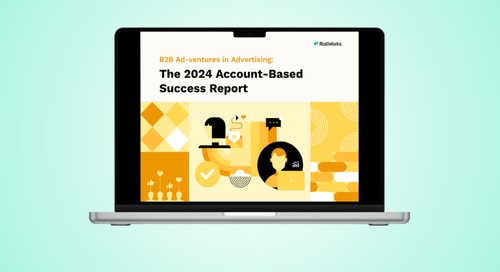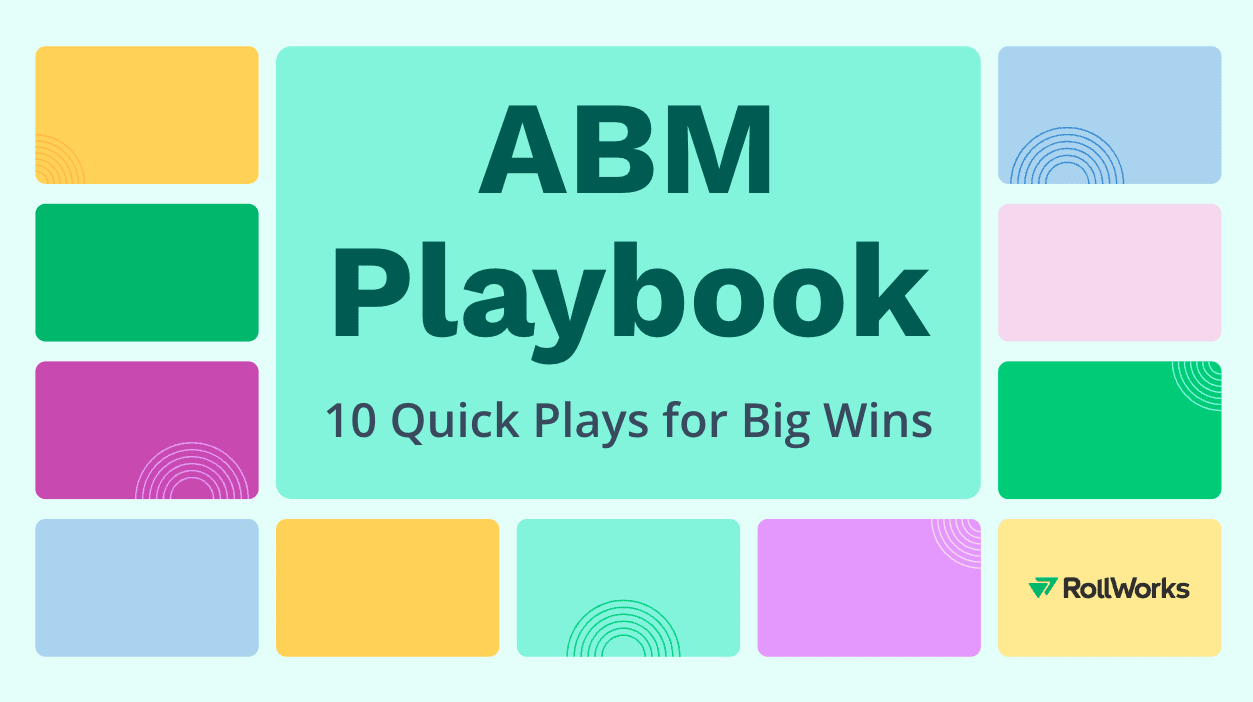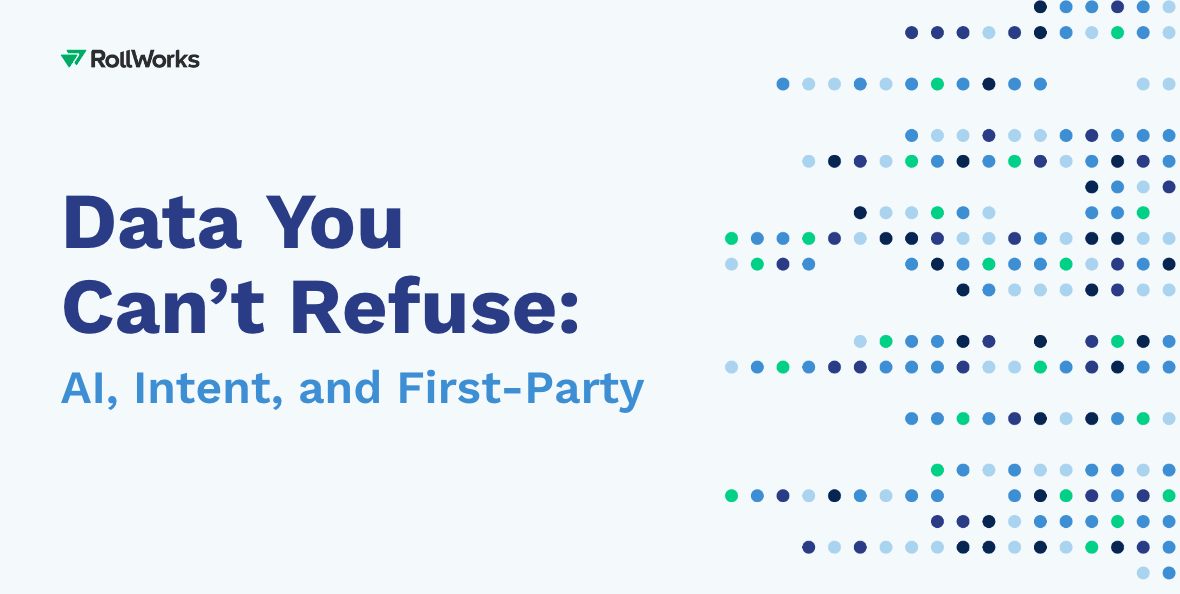In a world where nonstop data collection is the norm, intent data might be the northern star.
It arms companies with valuable insights into early-stage buying cycles—insights that enable marketing and sales teams to prioritize prospects most ready to buy.
But for all its promise, some brands still struggle to drive results with intent. They don’t know which data sources to trust, they’re not sure how best to apply it, and often, their marketing and sales teams don’t act on the same playbook.
How exactly do the most competitive B2B brands put intent data to work? They navigate the most common challenges surrounding it.
Challenge 1: How can we ensure we’re working with good data?
For marketers using intent signals, data quality is a major concern for good reason. If you can’t trust the data, you’re bound to waste time chasing false positives.
But what many marketers don’t realize is that “good” data doesn’t just materialize—the collection methodology matters too.
The solution: Qualify potential data providers
To ensure intent data is up to snuff, you’ll need to vet potential data providers by asking the right questions. Here are five questions to ask intent providers:
- How do you collect your intent data? Look for solutions that provide consent-based, brand-anonymous data from multiple content sources.
- Can you share some websites that you collect intent data from? The best intent providers source data from reputable, well-known web properties like Business Insider, Forbes, and The Wall Street Journal.
- How do you identify which businesses or contacts are consuming content? A data co-op like Bombora provides the business domain of users from their own registration data and can match IP addresses to business domains using proprietary technology. Offline databases and registration data sources may also match users to online devices.
- How do you measure the intensity of intent signals? Intent providers that use deep learning and natural language processing models to identify topics within content should be able to provide a range of data points around topic relevancy and depth of engagement.
- Is your data GDPR and CCPA compliant? Direct relationships with data co-op contributors ensure that providers like Bombora collect intent data in a privacy-compliant and consent-based manner. All personal data collected (including IP addresses) happens at the business level, not the individual level.
Challenge 2: How should we act on intent data?
It’s one thing to have the data, but applying it in ways that accelerate the buying cycle isn’t always straightforward, especially for those new to using intent signals.
If you’re following every topic under the sun or treating basic intent-level data (e.g. someone searching for “B2B marketing” topics) like purchase intent, you’ll chase poor-fit accounts and waste time on ineffective outreach.
The solution: Define levels of intent (and act on them accordingly)
Setting tiers for intent topics enables marketers to respond appropriately to an account’s demonstrated level of interest.
For instance, someone who searches for “display advertising” isn’t the same as a person who searches for “ABM platform” and your tactics should reflect this difference.
At RollWorks, we generally group intent data into two tiers:
- Tier one: Branded search, competitor names, anything containing “ABM”
- Tier two: Category intent (e.g. B2B advertising; display advertising, cross-channel advertising)
We still care about tier two because there’s some level of interest, but it’s not enough to merit immediate sales outreach.
To hit each target account with the right offer, run high-impact, low-effort nurture campaigns for low or mid-level intent topics—like category searches—and save one-off campaigns for high-intent topics—like branded search.
Here’s how that might look in practice:
Targeted advertising: Prioritize accounts for TOFU digital advertising.
- Choose intent topics relevant to your business
- Identify accounts in active, early buying cycles
- Prioritize high-intent accounts for digital advertising with TOFU messaging
Content personalization: Customize messaging for intent topic-based sub-segments.
- Identify accounts in active, early buying cycles
- Subsegment high-intent accounts by topic clusters
- Customize ads by subsegment
Prospecting: Prioritize accounts for sales (SDR) outreach.
- Choose intent topics relevant to your business
- Identify accounts in active, early buying cycles
- Prioritize high-intent accounts for sales outreach
No matter the playbook, making intent data actionable comes down to identifying different levels of intent and aligning your plays with each account’s stage in the buying cycle.
Challenge 3: How can we align sales and marketing?
The relationship between marketing and sales is less than ideal for many companies.
Each team may have different ideas around who to target, neither team has guidelines around prioritization, and more often than not, both teams work toward different business outcomes.
It’s a recipe for finger-pointing when quotas aren’t met. And unless each team understands lead activity at the account level, they’re bound to step on each other’s toes (and bungle the buyer’s experience in the process).
The solution: Define and act on a shared playbook
Aligning marketing and sales means developing a cohesive plan that works for both teams and devising an end-to-end process to carry that plan out.
Here’s how intent data comes into the mix:
- Aligning account audiences: Marketing uses intent data to build account personas and sales syncs their efforts to targeting these personas.
- Assignment and distribution of leads → Marketing uses intent data to automate lead qualification and sales follow-up focuses on “in-market” prospects.
- Relevant go-to-market messaging: Marketing uses intent data to personalize GTM messaging and sales reflects this through 1:1 outreach.
By mapping out each team’s role in the sales process, both teams can align expectations and create detailed plans to support them—the essence of being intentional.































